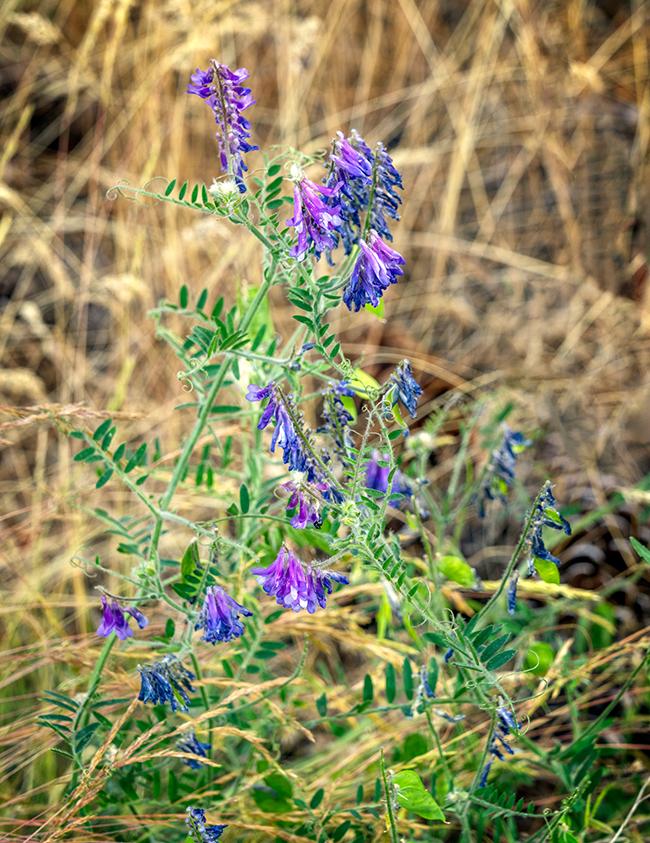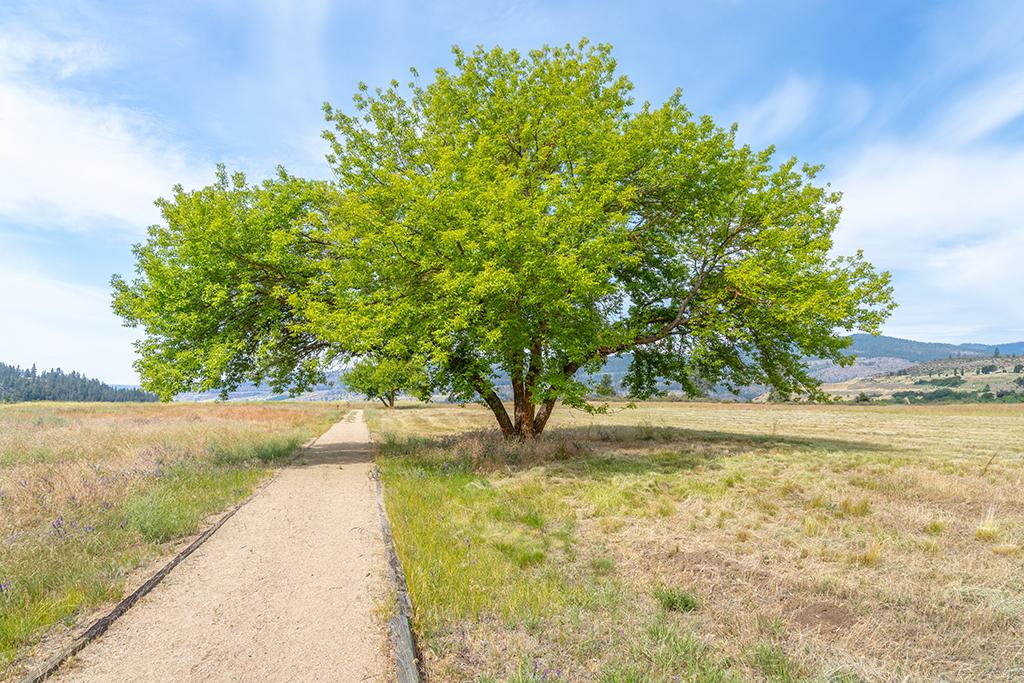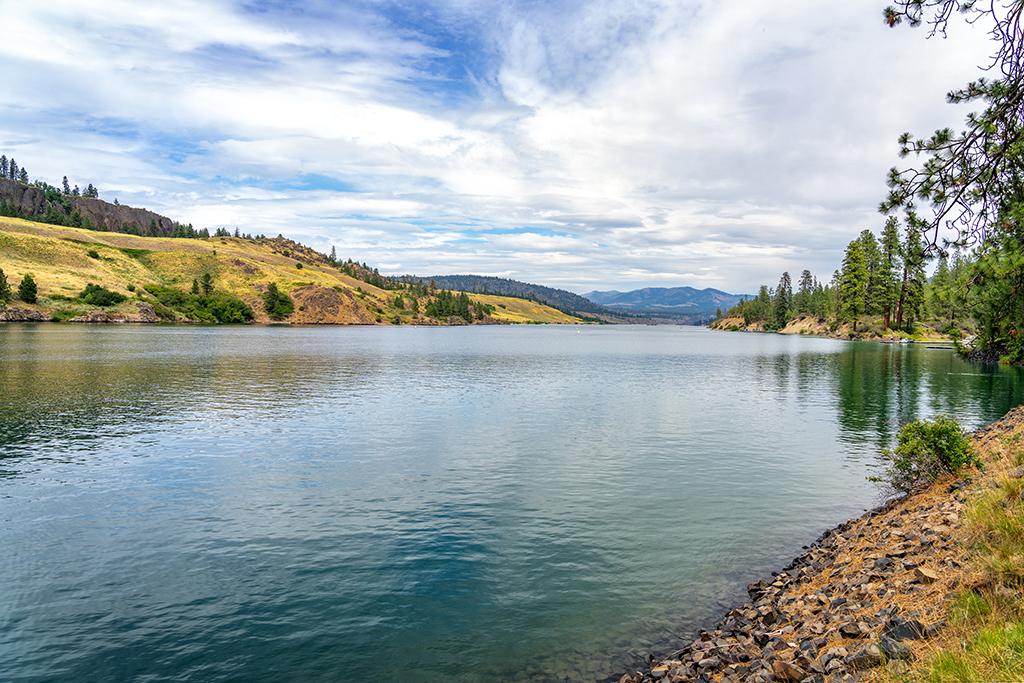
Welcome to Fort Spokane, Lake Roosevelt National Recreation Area / Rebecca Latson
It would be easy to fall into the mindset that you can only get great national park photos at those places with amazing landscapes or wildlife. But there’s so much more to national park photography than that. There’s history to photograph, too. Quite often, that history includes beautiful landscapes and cool wildlife. How you frame those photos will either capture your viewing audience’s attention or cause them to nod politely at each photo without spending much time really looking at them.
My June visit to Fort Spokane, located along the southeastern boundary of Lake Roosevelt National Recreation Area in Washington state, afforded me the opportunity to capture some cool history surrounded by equally cool landscape. History and landscape are intertwined at this fort located not too far from the banks of Franklin D. Roosevelt Lake.
Sandwiched in between water and basalt rock walls is what remains of Fort Spokane, nestled upon soft-looking, straw-colored fescue and wheatgrass on which grow patches of purple vetch and cream-colored yarrow. Box elder, ponderosa pine, and even a scraggly plum tree – a remnant of orchards once growing on fort grounds - dapple the grass fields that are home to rattlesnakes, coyote, deer, badgers, and even the occasional mountain lion.
There aren’t many historic buildings left except for the ones made of stone. Anything built of wood was “repurposed” for other homes once the fort was abandoned, leaving only their stone foundations peeking up from the long grass here and there to create lonely compositions. The only wood building is the quartermaster’s stable, a reproduction of the original.
Ok, so, where do you start with your camera?
If you can visit on a Saturday, my advice is to take the 10 a.m. ranger-led tour of the fort grounds as a sort of reconnaissance of the area (in addition to learning interesting facts about the fort). Get some photos here and there while on the tour, then re-wander the grounds on your own to capture different aspects of the landscape and buildings / foundations.
The gate entrance to the fort grounds as seen in the top image makes a nice introduction to the fort. FYI, that’s not the original road or entrance gate. The road was moved from its original location and the gate is something they thought would look nice over the road, according to the ranger who led my tour.
Visit in early summer and you can photograph the green and straw-colored grasses of the prairieland upon which sits the fort.
Capture those stone foundation remnants of officer housing seemingly sprouting up from the grassy prairie.

Overgrown foundation stones, all that's left of one of Fort Spokane's married officer's house, Lake Roosevelt National Recreation Area / Rebecca Latson

What remains of Fort Spokane's bachelor officers' dorm, Lake Roosevelt National Recreation Area / Rebecca Latson
If you spy a wildflower or even one of those huge dandelion balls, stop to get a close-up shot. Maybe add a little vignetting while editing the image to place a little more attention on the flower. If you’ve ever seen old-timey monochrome images, you’ll probably have noticed a darker frame encircling the subject(s). That’s vignetting.

Vetch vignetted, Fort Spokane, Lake Roosevelt National Recreation Area / Rebecca Latson
Think about filling the frame with one of those wildflowers or other plant feature. Filling the frame means getting as much of your subject into your composition as you can.

Filling the frame with a dandelion puff, Lake Roosevelt National Recreation Area / Rebecca Latson
Photograph a leading line image of the trail around the fort perimeter. Maybe include a box elder for reference and scale.

A box elder and the trail around Fort Spokane's grounds, Lake Roosevelt National Recreation Area / Rebecca Latson
Speaking of box elders, those are interesting trees. Typically, there are several trunks growing from a central area. However, some box elders were “trained” to sprout from only a single trunk, which did not always work to expectations.

Box elder trunk training failure, Fort Spokane, Lake Roosevelt National Recreation Area / Rebecca Latson
Don’t forget to capture a few shots with people. They also make great scale and reference to the landscape.

Walking the trail around Fort Spokane, Lake Roosevelt National Recreation Area / Rebecca Latson
When photographing the historic buildings there, include some of the landscape as well. Maybe a tree or two growing near the side of the quartermaster’s stable. Or perhaps use a tree as a natural frame to capture a shot of a distant building.

A natural frame around the quartermaster's stable at Fort Spokane, Lake Roosevelt National Recreation Area / Rebecca Latson
There are only three buildings remaining, so do photograph their interiors. Don’t just get a grab shot. Carefully framing your composition will create a more interesting shot. In the image here, the quartermaster’s stable allows for nice leading line images of the mule stalls.

Mule cart and stalls inside the quartermaster's stable at Fort Spokane, Lake Roosevelt National Recreation Area / Rebecca Latson
For the quartermaster’s stable, as well as any low-light photo of a building interior, your camera should be set for low-light compositions, which means you will need to increase the ISO to maybe 400 – 500, open your aperture to f4 or thereabouts, and slow down the shutter speed a little. If you are handholding your camera, like I did for this visit, you won’t want to decrease the shutter past 1/30. You’ll also want to apply the “burst method” of holding down on that shutter button for several clicks. Usually, one of those shots will turn out nice and sharp. The burst method does use up space, however, so remember to pack along several memory cards.
Photograph the tools of the trade, such as the original blacksmith bellows, the cannon carriage rest, or the mule cart.

The cannon carriage rest inside the quartermaster's stable at Fort Spokane, Lake Roosevelt National Recreation Area / Rebecca Latson
It’s ok to capture different angles of a historic building or landscape. You don’t need to adhere to a straight-on view of your subject. Different angles and perspectives create a bit more interest to what may be an otherwise mundane subject (to your viewers, anyway).

The quartermaster's stable, a faithful reproduction of the original at Fort Spokane, Lake Roosevelt National Recreation Area / Rebecca Latson
I arrived at Fort Spokane during midday, so I made do with what light I was given. If you can visit a historic place earlier or later in the day, do so. Unless it’s an overcast day, the lighting will create some interesting shadows and angles. Midday light is not a bad thing. With nothing hidden by shadows or shade, you’ll be able to photograph your subject with clear views of all aspects.
Photograph the informational signs and plaques. Add a little bit of the landscape/building about which those signs describe. Sure, you probably won’t show this to your viewers, but you’ll find them helpful reminders of facts and data you might otherwise forget regarding a particular site or subject.

Pointing to where the enlisted mens' barracks stood at Fort Spokane, Lake Roosevelt National Recreation Area / Rebecca Latson
After your day at Fort Spokane, venture on to Lake Roosevelt, itself, for a few shots of the water and surrounding landscape. The fort was built here because of the water.

The view up the lake at Lake Roosevelt National Recreation Area / Rebecca Latson
You can bring to life the history of a national park unit for your viewing audience with a little time and care when framing the composition in your camera’s LCD. Capturing photos at historic sites such as Fort Spokane also teach you cool facts and information with which you can impress family, friends, and colleagues. Your photos and info might even convince them to pay a visit to that site with their own cameras. Kudos to you, right?

 Support Essential Coverage of Essential Places
Support Essential Coverage of Essential Places






